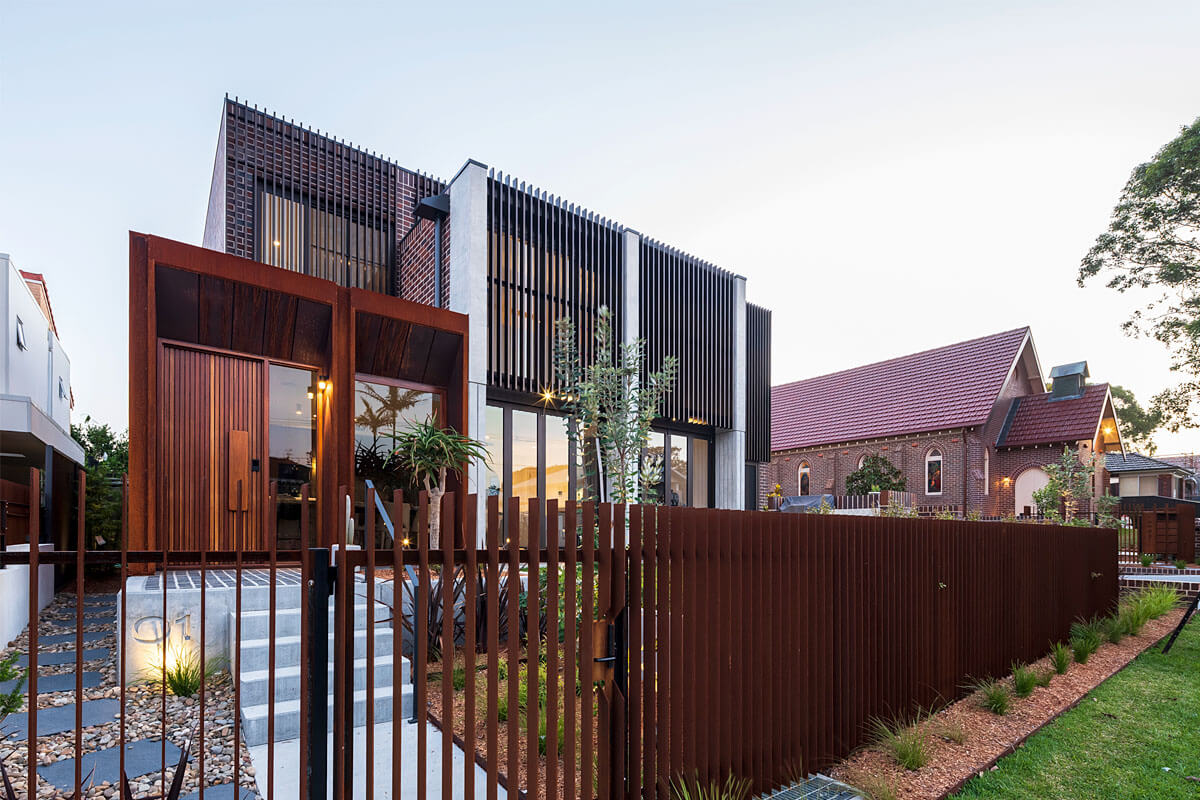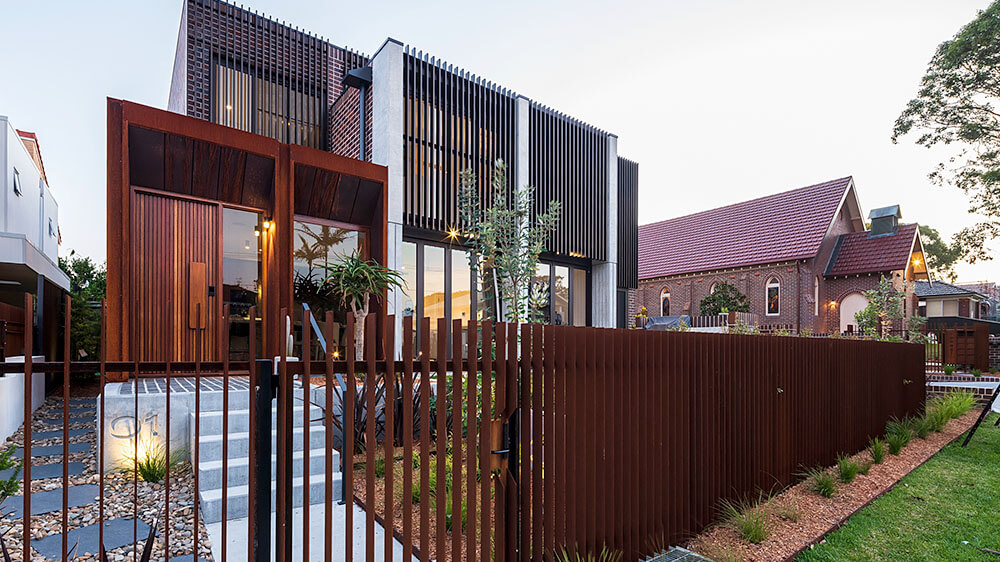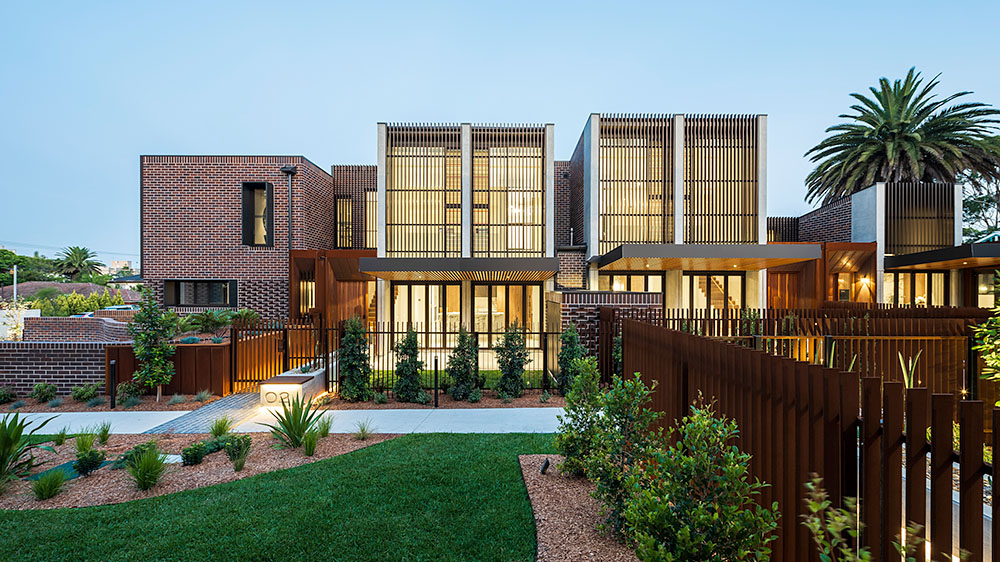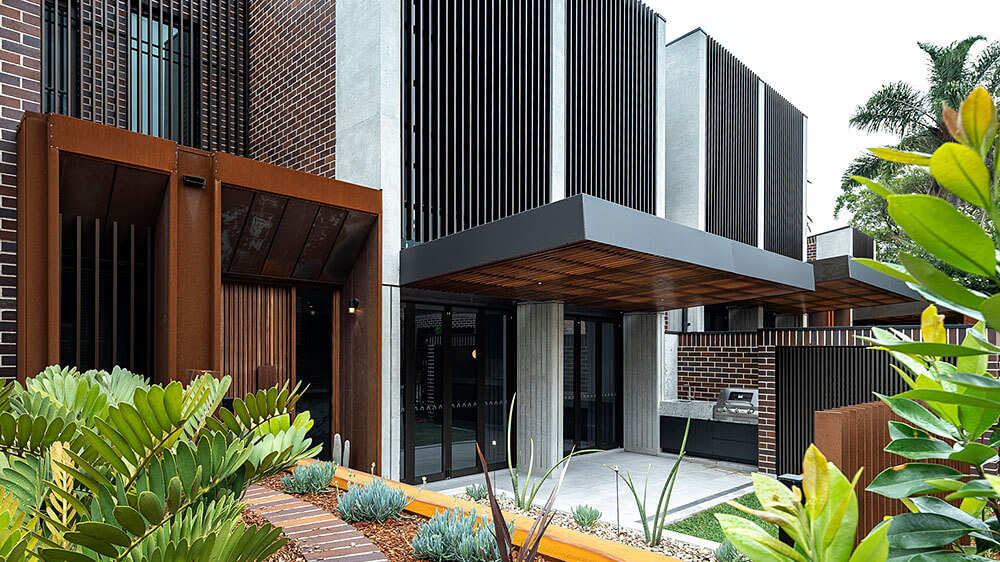The Abbey Cronulla is 300 m from Shelley Beach. The project is an amalgamation of 2 lots containing a heritage-listed community church, church support buildings and 2 dwellings sold by the church. The proposal turns the site into 7 homes to create a new community. The existing dwellings are replaced with 4 new homes. The heritage-listed church and support spaces are adapted into 3 dwellings.
Celebrating communal space
The proposal celebrates and maintains the public spirit of the church and its external communal areas, where all were once welcome. This celebration is reinterpreted through a publicly accessed landscaped courtyard that covers 30% of the site. The courtyard also provides access to all homes and lobbies, making it the site’s genuine communal heart. Public seating beneath a tree and publicly accessible seats at the entry of each home encourage gathering and chance meetings.
The site was arranged by locating the new dwellings along the east boundary. This maximises the distance to the church, framing the communal space. It also creates a buffer between the new and existing built fabric. This separation clearly defines the new dwellings as additions, scaled to suit the communal space and neighbours. It promotes the use of landscape to invigorate the project.
The new dwellings face the church through high voids. The new homes change the usual townhouse layout of ‘public’ front yard and ‘private’ backyard by combining both in the front yard. This allows all dwellings to be part of the public area. The layering of lush landscaping, separation and fencing creates privacy.
Using light differently
Church buildings are typically inward-looking and minimise light entry to heighten the religious drama. The built form of the project maintains the existing church and supports buildings in their existing form. Minor incisions to the existing architecture are finished in rusted steel in a way that clearly defines them as new works. These changes have been expressed in sharp contrast to the existing brick and tile finishes.
The new dwellings, in contrast, are treated as lanterns. The lantern glow created by the 7 m high void with screening for glass also provides privacy and climate control. Their built form responds to the surrounding context of 2-storey homes. They are in scale with taller spaces at the centre of the site and lower towards the boundaries, sensitively providing amenity to surrounding sites.





